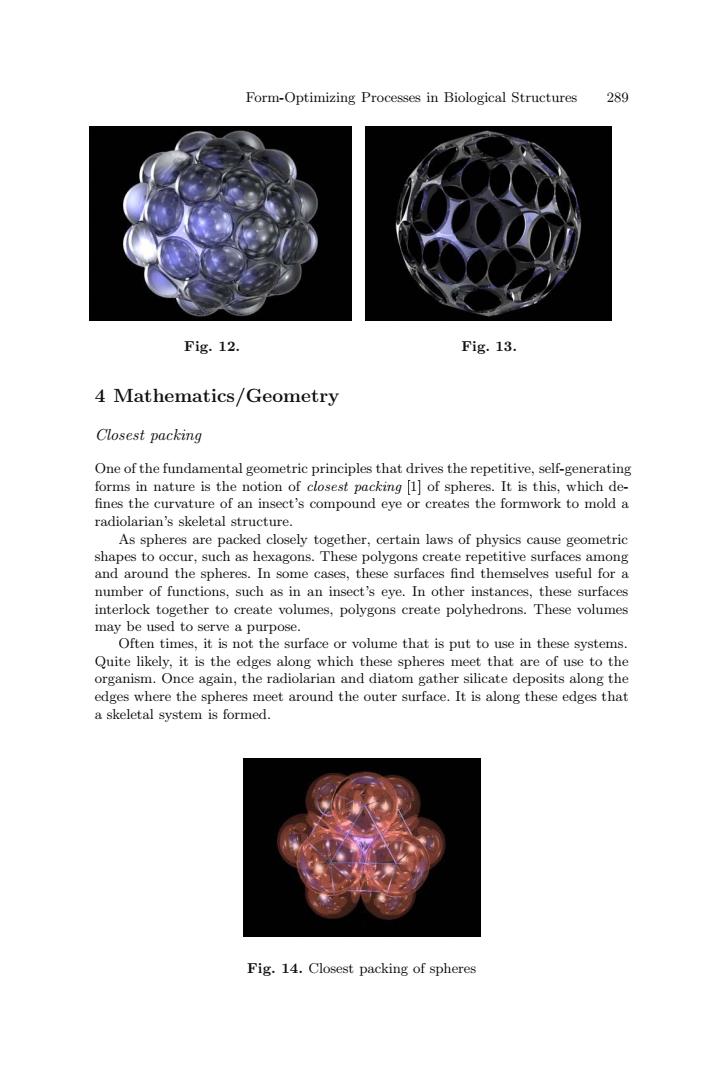正在加载图片...

Form-Optimizing Processes in Biological Structures 289 Fig.12. Fig.13. 4 Mathematics/Geometry Closest packing One of the fundamental geometric principles that drives the repetitive,self-generating forms in nature is the notion of closest packing [1]of spheres.It is this,which de- fines the curvature of an insect's compound eye or creates the formwork to mold a radiolarian's skeletal structure. As spheres are packed closely together,certain laws of physics cause geometric shapes to occur,such as hexagons.These polygons create repetitive surfaces among and around the spheres.In some cases,these surfaces find themselves useful for a number of functions,such as in an insect's eye.In other instances,these surfaces interlock together to create volumes,polygons create polyhedrons.These volumes may be used to serve a purpose. Often times,it is not the surface or volume that is put to use in these systems. Quite likely,it is the edges along which these spheres meet that are of use to the organism.Once again,the radiolarian and diatom gather silicate deposits along the edges where the spheres meet around the outer surface.It is along these edges that a skeletal system is formed. Fig.14.Closest packing of spheresForm-Optimizing Processes in Biological Structures 289 Fig. 12. Fig. 13. 4 Mathematics/Geometry Closest packing One of the fundamental geometric principles that drives the repetitive, self-generating forms in nature is the notion of closest packing [1] of spheres. It is this, which de- fines the curvature of an insect’s compound eye or creates the formwork to mold a radiolarian’s skeletal structure. As spheres are packed closely together, certain laws of physics cause geometric shapes to occur, such as hexagons. These polygons create repetitive surfaces among and around the spheres. In some cases, these surfaces find themselves useful for a number of functions, such as in an insect’s eye. In other instances, these surfaces interlock together to create volumes, polygons create polyhedrons. These volumes may be used to serve a purpose. Often times, it is not the surface or volume that is put to use in these systems. Quite likely, it is the edges along which these spheres meet that are of use to the organism. Once again, the radiolarian and diatom gather silicate deposits along the edges where the spheres meet around the outer surface. It is along these edges that a skeletal system is formed. Fig. 14. Closest packing of spheres